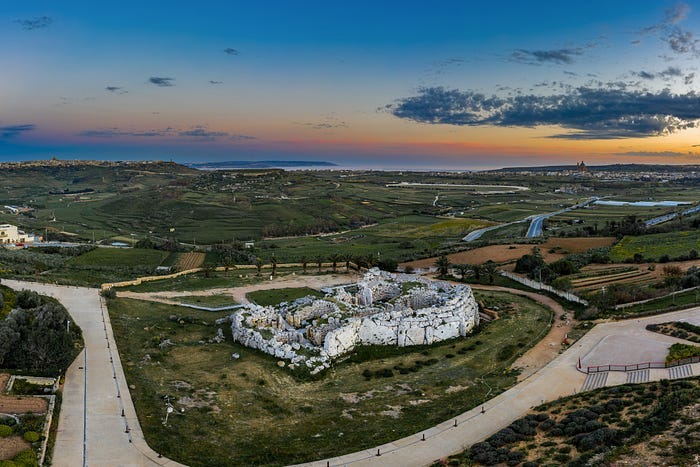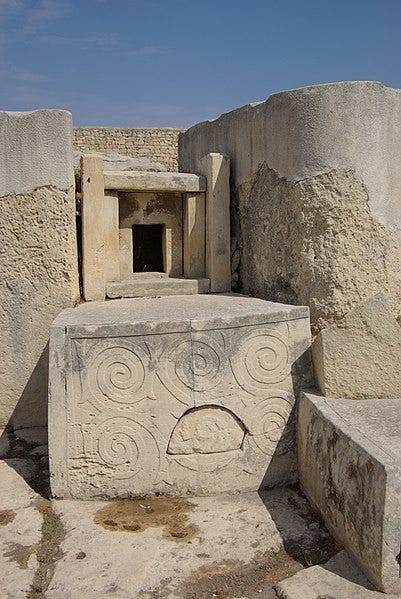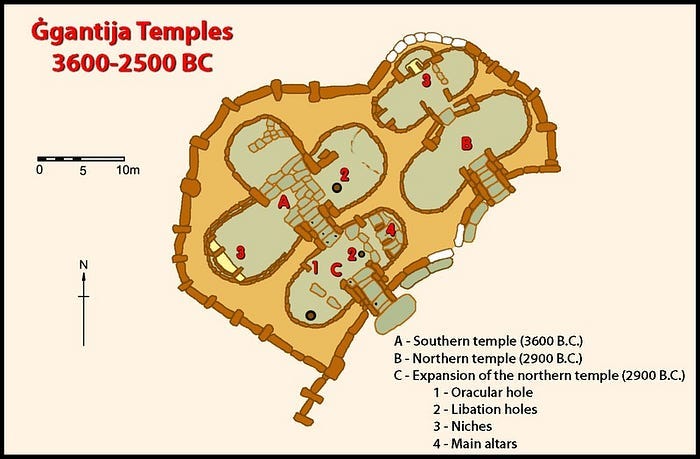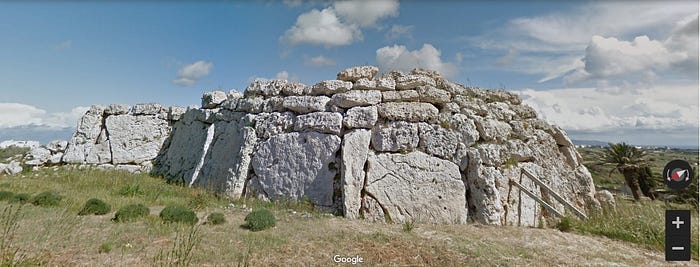You Can Walk Across This Island In A Day, And It Has Six Massive Megalithic Temples
This small nation might be the most resourceful in the world

Tape doesn’t excite people. Well, except for a friend of mine who spent some time in the army. He beams about this special tape the military uses called “100 mph tape.”
According to him, comparing your generic office tape to this is like comparing Luciano Pavarotti to your average sloshed coworker singing at karaoke night.
The weatherproof, extremely adhesive tape could do just about anything. Some even joke that it can hold the universe together.
My friend has seen it keep broken pieces on trucks, rumor says it can hold shattered rotors together on helicopters, plus NASA used their version of the tape to make an emergency carbon dioxide scrubber on Apollo 13.
It takes resourcefulness to extremes, and it got me thinking. If 100mph tape were a nation, which would it be? Personally, I’d put my money on Malta.
More recently in 1565, the religious order living there held off an Ottoman army of 40,000 with a garrison of only 6,000 knights. But that’s nothing. Malta’s ancient history makes this look like child’s play.
You can walk across this nation’s main island in about a day, yet Malta houses six UNESCO World Heritage sites. They’re comprised of massive temples, which were the oldest and largest free standing ancient structures in the region until Göbekli Tepe was unearthed.
All this on a tiny island chain.
The feat is so staggering, it may readjust in your mind how resourceful our long dead ancestors were. For this story starts almost seven thousand years ago.
A Resourceful Culture Of Builders

The Times of Malta reports a team of archeologists surveyed the island in 2018 and found evidence of human habitation starting in 5900 BC, likely from Sicily. Their evidence indicates colonization came in waves. The second round, starting in about 3850 BC, created a stable community for fifteen hundred years.
They farmed, had a source of meat, and took care of their sick to a surprising degree. Even an example of advanced dentistry was uncovered. A skull dating back about four thousand years ago showed proof that “an abscess had been lanced from the root of a tooth.”
Members of the research team called the community remarkable for their ability to survive in an area with such limited resources. But they did more than just survive. They created massive megalithic temples, which align to the heavens, filling rooms with sunlight through central doors.
The UNESCO World Heritage website sums them up well:
“The Megalithic Temples of Malta (Ġgantija, Ħaġar Qim, Mnajdra, Skorba, Ta’ Ħaġrat and Tarxien) are prehistoric monumental buildings constructed during the 4th millennium BC and the 3rd millennium BC…Each complex is a unique architectural masterpiece and a witness to an exceptional prehistoric culture renowned for its remarkable architectural, artistic and technological achievements.”
Although different, there are some common ties. Each structure has large exterior horizontal stones, “surmounted by horizontal blocks,” with a central entrance in the front. The buildings also show evidence of corbelled, or bracketed roofs, which may have had beams across them.
UNESCO notes this shows “remarkably sophisticated” architecture for the time. The block placing also made the structures very stable, while inside, there are multiple circular chambers, which are highly crafted.
UNESCO says these comprise of “panels decorated with drilled holes and bas-relief panels depicting spiral motifs, trees, plants and various animals.”
Ġgantija might be the most famous of the megalithic temples

According to Malta’s national organization for preservation of antiquities, Heritage Malta, this structure was built in the Neolithic period (3200 to 3600 BC). So, it was made with no metal tools. It was also carved out of two different types of local limestone.
While hard Coralline limestone protects the outside, softer Globigerina was used for artistic elements on the inside. Within you’ll find “doorways, altars and decorative slabs.” There are also decorative carvings with evidence of plaster and paint.
Many animals’ bones were found inside, along with evidence of hearths, which leads researchers to believe it was a site of ritual feasting. There are also holes in the ground. These are thought to be for pouring libations.

While each site has its own individual characteristics, they all share a common purpose of worship, and show evidence of a highly organized society. Not to mention incredible 100mph tape-like resourcefulness.
Although one researcher has an out-of-the-box theory about the temples and Malta itself.
A Little Too Resourceful For Tiny Islands
Researcher and author Graham Hancock in his Netflix series Ancient Apocalypse, explains Malta is only half the landmass of Chicago, but somehow built nineteen megalithic structures. With their limited population, resources, and technology, it doesn’t sound logical.
He thinks the presently accepted build date is incorrect. Only objects have been carbon dated at the temples. Since many people have populated Malta, these possessions could have been left at a later date, long after the structures were built.
Hancock believes the builders walked to Malta. It was originally connected to Sicily and Italy by a land bridge starting from eighteen thousand BC.
He reminds the viewer that human habitation was found in Sicily dating to twelve thousand BC. Why stop walking if the islands are connected?
He also interviews Dr. Anton Mifsud of the Prehistoric Society of Malta about a controversial find in a local cave — a couple Neanderthal teeth. They were buried in a layer of dirt dating to over eleven thousand years ago.
In another interview he talks to Dutch researcher Lenie Reedijk who shows that none of the megalithic temples are aligned in the same direction. But going back thousands of years, the stars appeared in different places due to the wobble of the Earth. It’s a phenomena called the Procession of the Equinoxes.
It’s why the ancient Egyptians had a different North star than we do today.
Through a software package, she took their alignments and found they match up to the star Sirius, the brightest in the sky. She believes that’s why there are so many temples. Sirius moves about one degree per seventy-two years, so another temple would be necessary when it was out of alignment.
Reedijk says Sirius would have been in the right position around eleven thousand years ago.
Obviously, this is all speculation, but highly entertaining speculation. Although there’s one thing that’s not.
Large Feats Of History In A Small Package

While UNESCO has six megalithic temples designated as world heritage sites, there are at least nineteen on the islands. Consider it endless history bang for your buck. In fact, Malta offers many walking tours which only take about a day, and bring you to endless historical treasures.
In a single walk, you can see modern advanced port facilities, medieval era forts which housed knights, then move on to Neolithic ruins. It’s the closest thing possible to stepping through a time machine. All on a small island.
So, while there may be controversy to the time frame of their most ancient monuments, there’s no controversy to the nature of Malta. It’s the geographic embodiment of 100mph tape. The small nation takes resourcefulness to a level never thought possible.
-Originally posted on Medium 12/3/22



Malta has hosted several historically consequential groups from the Knights Templar, the Knights of Malta, and the British who held out against the Nazis for over two years in WWII. It's not well known, I think, that Malta was the most bombed area in all of WWII. 'must be hardy, resourceful people.